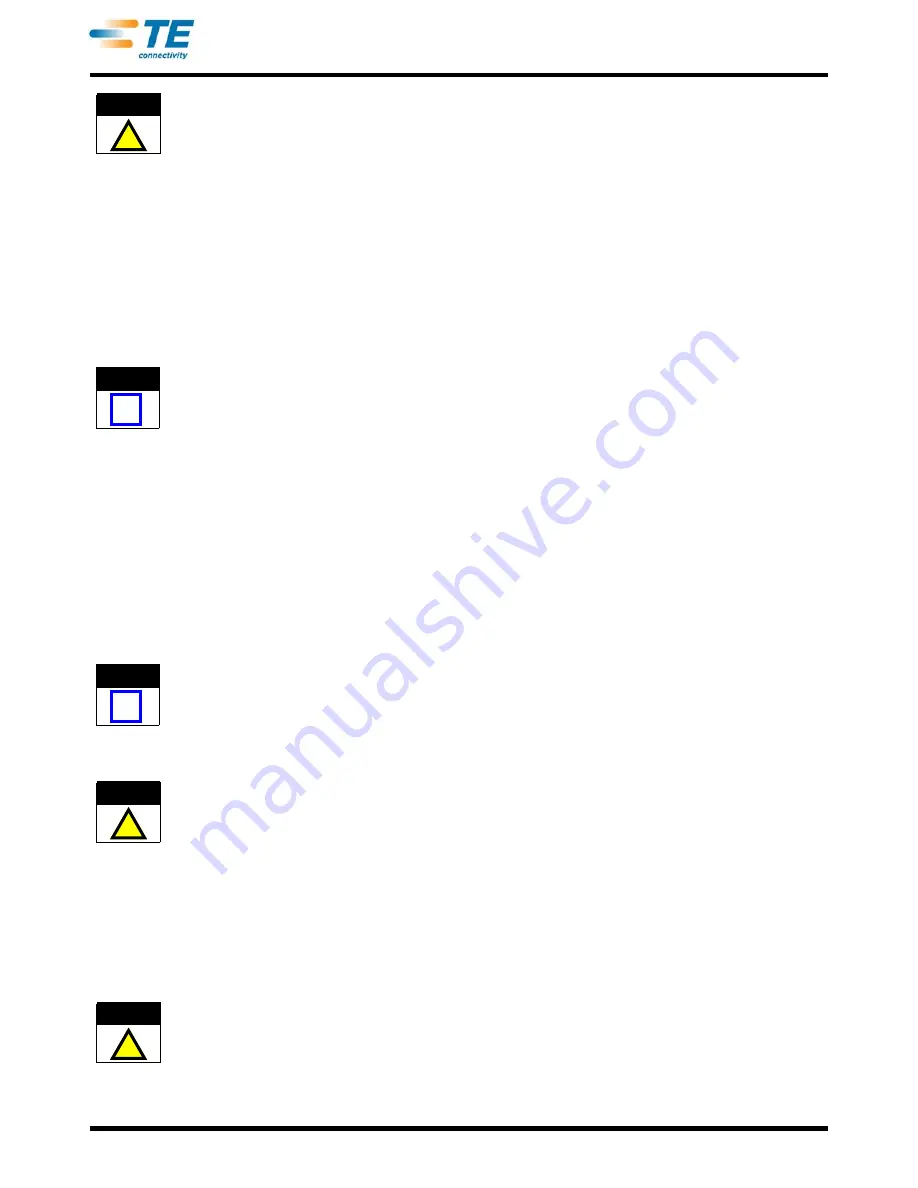
CAUTION
!
409-5860
12
of 16
Rev C
NEVER use brake fluid as a substitute for the recommended hydraulic fluid.
To add fluid:
1. Use a clean cloth to remove all dust and grit from area around filler plug. See Figure 6.
2. Remove filler plug, and insert a clean funnel, with filter, into filler hole.
3. Fill reservoir with recommended hydraulic fluid. See Figure 3.
4. Replace cap and be certain that breather hole in cap is open.
5.3. Bleeding Air from the Hydraulic System
If air gets into the hydraulic system (indicated by a "spongy" action of the handle when it is pumped), the air
should be removed as follows:
NOTE
i
Hand pump should always be elevated above crimping head when bleeding air from hydraulic system.
1. Make sure that the hold/return lever is in the return position.
2. Pump the lever several times to fill hydraulic pump.
3. Move the lever to the hold position.
4. Pump the lever until ram (moving die holder) advances.
5. Position the lever to remove air from the hydraulic system.
6. Repeat Steps 4 and 5 about three times to ensure that all air is removed from hydraulic system.
7. Check hydraulic fluid supply after bleeding the system. Fill if necessary, according to Paragraph 5.2. Hand
pump is now ready for use.
5.4. Pressure Relief Valve Check
NOTE
i
This procedure should be performed with crimping head and hose attached.
The pressure relief valve is preset at the factory to open at 55160 to 57918 kPa [8000 to 8400 psi]. This valve
should be checked periodically, depending on use. Proceed as follows:
CAUTION
!
Make sure that the hold/return lever is in the return position.
1. Remove pipe plug and install gage. See Figure 10.
2. Pump lever until the bypass is activated. A slight decrease in effort required to move the lever indicates that
maximum required crimping pressure has been reached.
3. Take pressure reading to ensure that pressure is within acceptable range.
4. Position lever to release all hydraulic pressure from pump.
5. Remove gage and replace pipe plug.
CAUTION
!
NEVER alter the setting of the pressure relief valve. If the valve does not open at the required pressure, it should be
replaced.


































